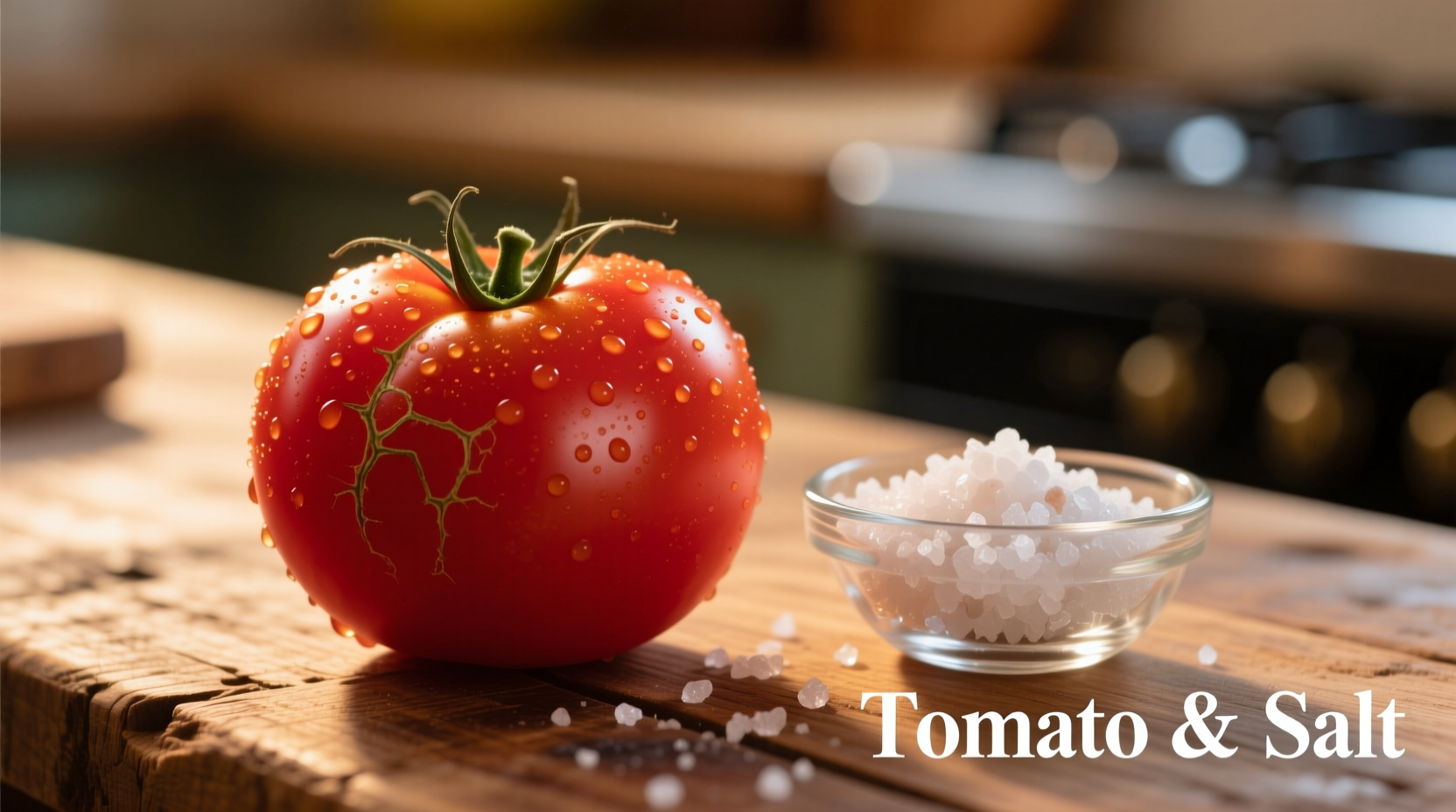When you sprinkle salt on tomatoes, you're not just adding flavor - you're triggering a precise scientific process that fundamentally changes their texture and taste profile. This culinary technique, used by professional chefs for centuries, leverages basic food science to transform one of summer's most beloved ingredients. Understanding the proper application can elevate your cooking from amateur to exceptional.
The Science Behind Salt and Tomatoes
Salt interacts with tomatoes through a process called osmosis. Tomatoes contain about 95% water within their cellular structure. When salt crystals contact the tomato surface, they create a hypertonic environment that draws moisture out of the cells. This isn't merely water removal - it concentrates the tomato's natural sugars and glutamates while breaking down cell walls to release more flavor compounds.
| Tomato Variety | Water Content | Optimal Salt Rest Time | Flavor Enhancement |
|---|---|---|---|
| Roma | 93% | 10-15 minutes | ★★★★☆ |
| Beefsteak | 96% | 15-20 minutes | ★★★☆☆ |
| Cherry | 92% | 5-8 minutes | ★★★★★ |
| Heirloom | 95% | 12-18 minutes | ★★★☆☆ |
This table, based on USDA Agricultural Research Service data, shows how different tomato varieties respond to salting. The moisture content directly affects how much salt penetration occurs and how long you should let tomatoes rest before using them in your dish.
Practical Applications in Everyday Cooking
Knowing when and how to apply salt makes the difference between a watery tomato salad and one with concentrated, vibrant flavor. Follow these chef-tested techniques for perfect results every time:
For Fresh Tomato Salads
Sprinkle ¼ teaspoon of kosher salt per pound of sliced tomatoes and let them rest in a colander for 10-15 minutes. This draws out excess liquid that would otherwise dilute your dressing. Gently press tomatoes with a paper towel to remove surface moisture before adding to your salad. The salted tomatoes will better absorb vinaigrette flavors while maintaining firm texture.
For Pasta Sauces and Stews
Add salt early in the cooking process when using fresh tomatoes. As the tomatoes cook down, the salt helps break down cell structures, releasing more flavor compounds and creating a richer, more complex sauce. For canned tomatoes, drain excess liquid first, then add salt to taste during simmering to avoid over-concentration.

When Salting Backfires: Critical Timing Considerations
While salt generally improves tomato dishes, improper timing creates problems. Never salt tomatoes immediately before serving - the drawn-out moisture makes them soggy. Avoid salting tomatoes that will be roasted, as the high heat already concentrates flavors. For tomato-based soups, add salt after other ingredients have cooked to prevent drawing out too much liquid prematurely.
Historical Context: Salt's Role in Tomato Preservation
Salt has preserved tomatoes for centuries before modern canning techniques existed. Historical records from the USDA National Agricultural Library show that early American settlers used salt-curing methods to extend tomato season:
- 1700s: Settlers salted tomatoes in wooden barrels for winter storage
- 1820: First published tomato ketchup recipes used significant salt for preservation
- 1870: Commercial tomato canning reduced reliance on salt preservation
- 1943: USDA established modern safe canning guidelines for tomatoes
Today, we use salt not primarily for preservation but for flavor enhancement and texture control - a culinary evolution documented in the USDA Agricultural Research Service archives.
Professional Chef Techniques Worth Stealing
Master chefs employ specific salt techniques that home cooks can easily adopt:
- Layered salting: Sprinkle salt between tomato slices in caprese salad to create flavor pockets
- Salt concentration control: Use 1% salt by weight for dehydrating tomatoes versus 3% for immediate flavor enhancement
- Salt type selection: Kosher salt for general use, flaky sea salt for finishing, and fine table salt for precise measurements in sauces
Avoiding Common Mistakes
Even experienced cooks make these errors with tomatoes and salt:
- Over-salting after draining: Remember that draining removes some salt along with moisture
- Using iodized salt: Can impart metallic flavor to delicate tomato dishes
- Sprinkling salt unevenly: Creates pockets of intense saltiness amid bland areas
- Salting too early for certain dishes: Like tomato tarts where excess moisture ruins pastry
For best results, always taste after draining salted tomatoes before adding additional salt to your dish. The amount drawn out varies significantly based on tomato variety and ripeness.
When Salt Isn't the Answer
Not all tomato preparations benefit from pre-salting. Raw tomato sandwiches on soft bread actually need the moisture for proper texture integration. Fresh tomato bruschetta benefits from the natural juiciness that provides contrast to the crispy bread. For these applications, salt directly before serving rather than in advance.











 浙公网安备
33010002000092号
浙公网安备
33010002000092号 浙B2-20120091-4
浙B2-20120091-4